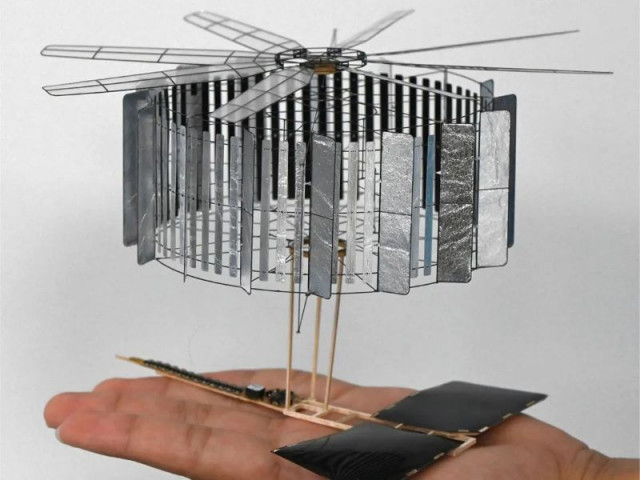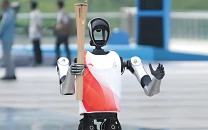Lightweight solar-powered drones promise indefinite flight
The Chinese aerial robot weighing 4 grams is powered by tiny solar panels that produce extremely high voltages

A drone weighing just 4 grams has become the smallest solar-powered aerial vehicle to take flight, owing to its innovative electrostatic motor and miniature solar panels that generate extremely high voltages. Although the hummingbird-sized prototype only flew for an hour, its creators believe their method could lead to insect-sized drones capable of indefinite flight.
The solar-powered machine was designed by researchers at Beihang University in Beijing, known for their expertise in aeronautical and astronautical research. The size and weight are now only 1/10 and 1/600 of the previous world's smallest and lightest solar-powered aircraft, respectively.
Micro aerial vehicles have a host of applications, from environmental monitoring to search and rescue, making them versatile tools. They can perform specialized tasks such as capturing images, detecting objects, and transporting items in confined spaces. However, limited flight duration poses a significant obstacle to their usefulness.
Traditional micro aerial vehicles use electromagnetic motors to power their rotors. However, a major problem always arises when the small motor overheats at high speeds, causing a sharp drop in energy conversion efficiency. Natural sunlight can be a potential alternative as an energy source, but the smaller a drone gets, the less surface area it has to collect sunlight, which ultimately can generate a limited amount of energy, lead researcher Qi Mingjing explained.
In the study, published in the journal Nature on Thursday, the research team highlighted that traditionally, flying machines weighing less than 10 grams can only stay aloft for up to 10 minutes.
To overcome the efficiency challenges, Qi and his colleagues developed an electrostatic motor that uses the Coulomb force, the force between electrically charged particles at rest, to generate continuous rotating motion. The drone's name, CoulombFly, also comes from this unique motor.
A demonstration video presented by the researchers showed that the motor works by creating a circle of electric charges, which generates a twisting force to make a single blade spin like those on a helicopter.
The advantage of such a motor is that it can effectively reduce heat, co-author Peng Jinzhe said. "This is because static electricity operates at high voltage and low current. The lower the current, the less heat it generates."
The energy conversion efficiency of flying machines weighing less than five grams and powered by such static electricity could exceed 10 times that of traditional electromagnetic motors, with less than one-tenth of the power consumption required for the same lift, according to the study.
Read: New quadcopter tech allows drones to recharge on power lines
Prior to this breakthrough, Harvard University researchers published a paper in Nature in 2019 introducing the Robobee aircraft they developed, that was once considered the highest level in the field of micro aerial vehicles. However, it relied on an artificial light source, equivalent to three times the intensity of natural sunlight for sustained flight.
The new drone CoulombFly can achieve continuous flight solely relying on natural light, representing a significant leap forward, the researchers said.
After further development, the new drone motor technology is expected to be applied in emergency rescue operations, narrow space detection and other similar scenarios, said Professor Yan Xiaojun, one of the lead researchers of the study.


















COMMENTS
Comments are moderated and generally will be posted if they are on-topic and not abusive.
For more information, please see our Comments FAQ